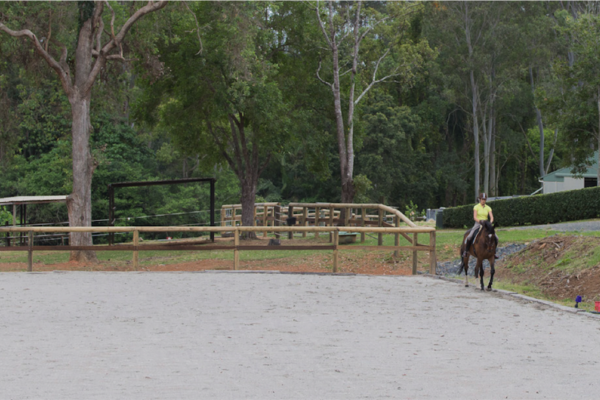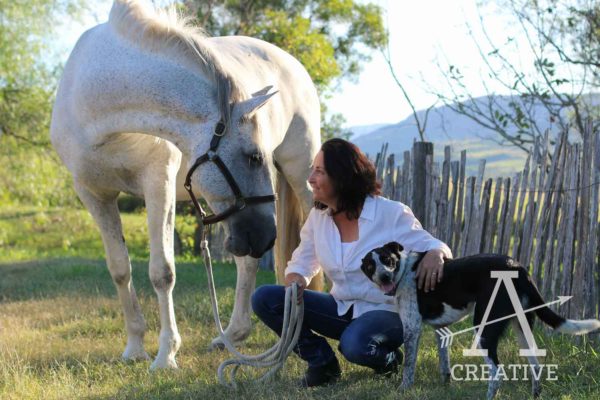09/03/2015 by Dr Anne Beasley, School of Veterinary Science, University of Queensland (reposted from Horses and People Magazine)
Three years on from the launch of an Australian study into drug resistance in horse worms, the results are in! The project produced some really useful data which was lacking in the Australian literature and also shed light on some concerning issues that impact all facets of the equine industry. Here is a short summary of the background of the project, what I did and what I found.
There are two worms that demand most of our attention when managing equine parasites; small strongyles and the large roundworm of foals, Parascaris equorum.
Small strongyles are, by far, the predominant parasite group infecting horses of all ages and have the potential to cause clinical disease when they synchronously emerge from the gut wall en masse. P. equorum only infects young horses under two years of age and, due to its impressive size (up to 20 cm), can cause major intestinal problems for foals, but more commonly impedes growth.
The anthelmintics we regularly use to combat these parasites contain active ingredients that belong to one of only three available drug classes – the Benzimidazoles (BZ’s), the Tetrahydropyrimidines (THP’s) or the Macrocyclic Lactones (ML’s). That’s a pretty limited artillery, especially when you consider that drug resistance among worm populations is becoming a major hurdle. Understanding the efficacy of the drugs we use is absolutely essential in building an effective and sustainable approach to controlling these important parasites.
The driving force that underpinned the research project was the lack of surveillance carried out in Australia of the resistance status of important worms like small strongyles and P. equorum, particularly to the ML drugs Ivermectin, Abamectin and Moxidectin, which make up the lion’s share of our registered horse worming products.
For many years, reports have been emerging from overseas documenting cases of ML-resistant worms (especially P. equorum) and, yet, we have not been proactive in keeping an eye on how well these drugs are working for us here. Do we really know if the drugs we are using actually work?
To address this question, a cross-sectional study was designed to investigate whether or not the ML drugs are still providing 100% efficacy against small strongyles and P. equorum worms on Australian properties. The way in which we assessed resistance status was by conducting Faecal Egg Count Reduction Tests (FECRT’s) on a groups of horses on a number of properties across eastern Australia.
The FECRT is a simple comparison of faecal egg counts immediately before and two weeks after worming. When the drug being tested is fully effective against the target worm population, we expect to see a 100% (or very close to 100%) reduction in faecal egg count. Conversely, in cases where the worms have built up resistance to the drug, we would only see a reduction of 95% or less, indicating that some worms were able to survive the treatment and continue shedding eggs.
Resistance is very common among small strongyles to the BZ class of drugs (which contain the active ingredients Oxfendazole or Fenbendazole) and so we often see sub-optimal reductions, sometimes reaching as low as 0%! That’s right, in some cases, the BZ’s are completely ineffective. You may as well be treating your horses with water!
The research was funded by the Rural Industries Research and Development Corporation (RIRDC) and was co-ordinated from the School of Veterinary Science at the University of Queensland. A call was put out via various media outlets, including articles in Horses and People Magazine, to attract interested and willing participants.
There was an unexpected and overwhelmingly high level of interest in the research topic, and many horse owners and managers who fit the research criteria were recruited. Participating properties were located throughout the eastern parts of Queensland, New South Wales and Victoria, with a handful of Tasmanian and South Australian recruits also. Each participant collected samples from their own group of horses, and submitted the samples to UQ for processing and analysis.
The positive news emerging from this study is that there was no sign of ML-resistance in any of the small strongyle populations tested, which suggests that we can continue using the ML wormers with the confidence that we are eliminating strongyle egg shedding after treatment, at least for the short term. That’s the good news, however, there is some less encouraging news that follows.
During the study, some properties submitted follow-up samples in the weeks after the FECRT which suggested that strongyle egg shedding is recommencing faster than expected after worming. We call the time frame between worming and when faecal egg counts begin to rise again the ‘Egg Reappearance Period’ (ERP).
When the ML drugs first came onto the market, the ERP for Ivermectin was at least eight weeks and for Moxidectin it was even longer – at least 12-14 weeks. You may be surprised to know that other countries have recently reported strongyle ERP’s following both Ivermectin and Moxidectin treatments of just 4-5 weeks.
Again, we have not been proactive in measuring ERP’s for Australian small strongyle populations, but there is no reason to expect that our worms are evolving any differently to those overseas. The shortening of ERP’s indicates a shift in drug sensitivity towards resistance and should be considered as an early sign of resistance. In light of these findings, there has never been more incentive to adopt worm management strategies that slow the development of resistance and prolong the life of our anthelmintic drugs.
The other major finding of the study was that we do indeed have ML-resistance in our P. equorum populations. A faecal egg count reduction of just 65% was recorded after treatment with Ivermectin on one south-east Queensland horse property; far less than the 95% reduction that we deem as acceptable in terms of drug efficacy. This result has major implications for horse breeders on any scale – large or small. If you are relying exclusively on ML drugs to treat your foals and weanlings, you may be leaving them vulnerable to the effects of resistant P. equorum worms.
So, it has become clear that our ‘broad-spectrum’ drugs are not so ‘broad-spectrum’ anymore. The ML’s are still effective against small strongyles in the short term, but are failing against P. equorum. At the other end of the spectrum, the BZ’s have already failed against small strongyles, but are still effective against P. equorum (although we need to keep an eye on this too as it is likely to change!). We need to know what type of worms we are targeting and what drugs are effective against them. So, we should all get into the habit of looking at the active ingredients in the wormers we choose. Forget the brand name, it’s all about the drugs.
Some practical advice…
Careful consideration needs to be given when choosing wormers, especially for young horses. It is important to realise that every property is not the same. If you currently rely on ML wormers in your foals and weanlings, it would be wise to carry out a faecal egg count two weeks after treatment to check drug efficacy. If resistance has reared its ugly head, switch to a combination wormer that contains two active ingredients, one of which should be a non-ML (and there are several on the market to choose from e.g. Equimax Elevation, Equitak Excel, Strategy-T).
Foals should first be treated at about eight weeks of age – no earlier – and then again around the time of weaning. For these first treatments, a wormer that targets P. equorum is essential, so a combination product is ideal. Another two treatments are recommended at nine months and 12 months of age when small strongyles are likely to have taken over as the main target parasite. For these treatments, the ML products should be sufficient. Ensure that one of those treatments contains Praziquantel, which is a narrow spectrum drug that specifically controls tapeworm.
For people managing mature horses, the message is clear: ML resistance in small strongyles is just around the corner unless we begin to change our practices. There are no new drug classes under development. We need our ML’s to remain effective for as long as possible. Evidence-based, targeted and strategic approaches to worm control have been covered in a previous article and these are absolutely essential to delaying the onset of resistance.
In conclusion, I would like to send a personal message of thanks to the horse owners and managers who showed so much interest in the topic, and who generously contributed samples and information. It was clear to me throughout this study that the horse industry is made up of people who care deeply about the health and welfare of their animals, and are equally thirsty for knowledge on topics like this. I could not have completed the project without your support.




